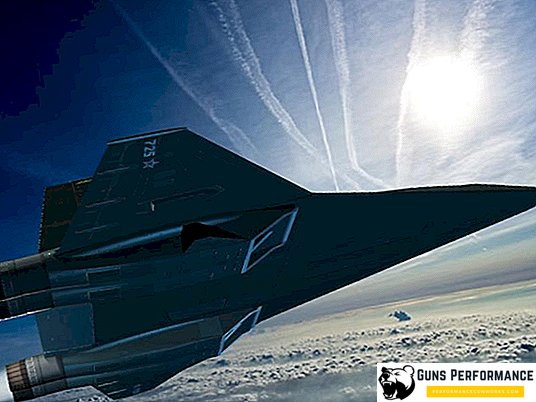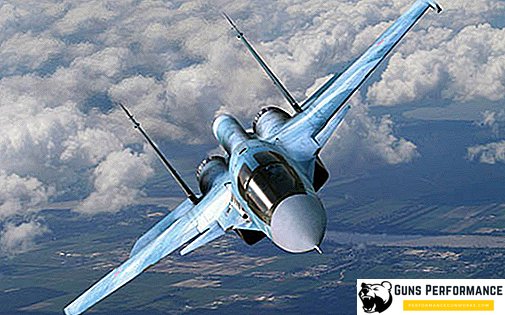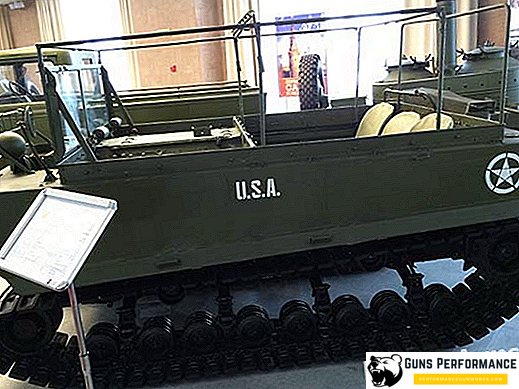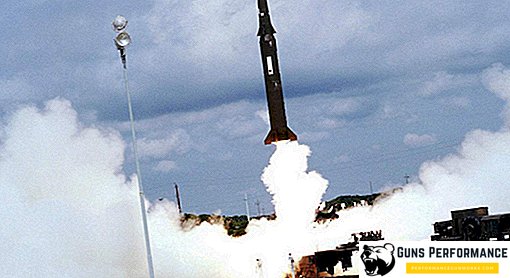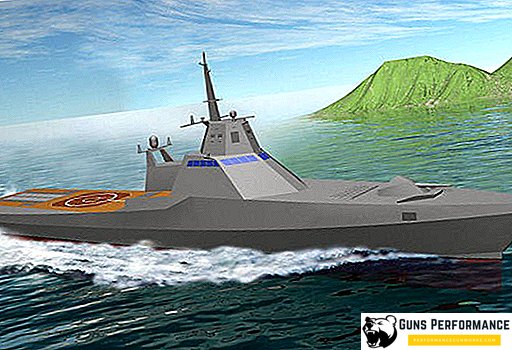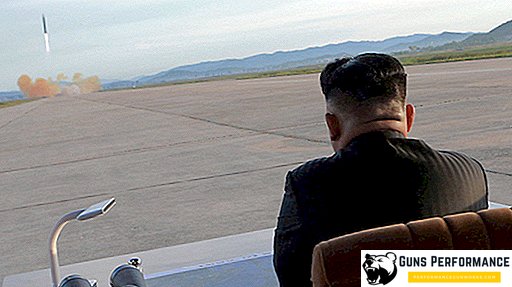The Triumph anti-aircraft missile system was designed to destroy reconnaissance aircraft, UAVs, control and radar detection aircraft, jamming planes, tactical and strategic aircraft, medium-range ballistic missiles, tactical and operational-tactical ballistic missiles, hypersonic targets, and other promising and modern means of air attack. The S-400 air defense system was put on alert for the first time in 2007 in Elektrostal near Moscow.
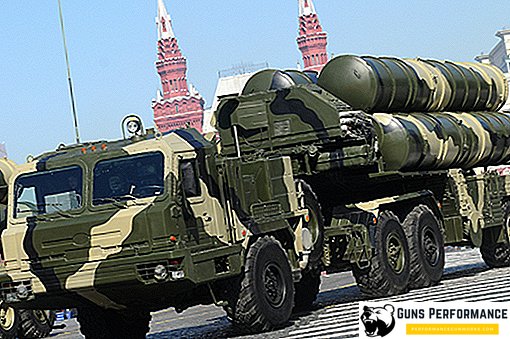
The S-400 Triumf anti-aircraft defense system was created on the basis of the Russian S-300 complex, but it possesses significantly better tactical and technical capabilities in terms of effectiveness, coverage, as well as the diversity of the targets hit. According to the criterion "cost - efficiency," the new anti-aircraft missile system S-400 "Triumph" provides a gain of about 2.5 times compared with the outdated S-300. "Triumph" is the only system that can work selectively with the use of several types of missiles - new and old designs used in the S-300PMU-1 and S-300PMU-2 complexes. S-400 allows you to create anti-aircraft defense in depth, expands the affected area, has significant prospects for modernization.

The history of the complex C-400
The main developer of the S-400 air defense system was NPO Almaz, which is part of the Almaz-Antey Air Defense Concern. The complex can be used night and day in any physiographic, as well as climatic and climatic conditions with strong electronic countermeasures. S-400 "Triumph" - a system of air defense and non-strategic missile defense with the latest software.

The need to create an air defense system with a range of detection and destruction at a distance of 400 km was due to the development of the combat capabilities of AWACS aircraft of the Avaks type. The project of the "Triumph" complex started in 1988. The team of designers was headed by A.A. Lemansky. As a prototype, the design bureau used ZRS S-300P.
The S-400 complex differs from the previous generation S-300 in an expanded area of application, it can use existing and prospective anti-aircraft guided missiles. The new 9M96E type missile defense system was created for the first-class defeat of airborne combat props, DRLO and EW aircraft, OTBR and MRBD, strategic bombers at a distance of up to 400 km. 9M96E2 and 9M96E missiles are unified among themselves, they can also be used by shipboard anti-aircraft missile systems. The 9M96E2 missile has a more powerful engine, a greater starting mass, length and range of damage. On average, their effectiveness is 2 times higher than the capabilities of the Aster and Patriot complexes. The Triumph missile system can also use 48N6E2 and 48N6E missiles.

The first launch of the modified 48H6E missile was carried out at the Kapustin Yar test site in January 1999. In 2006, tests of the missile, designed to destroy ballistic targets by physical destruction of the head parts of the missiles, were completed. In July 2007, at the same Kapustin Yar test site, the S-400 was fired. The target was moving at a speed of 2.8 kilometers per second and was successfully hit. Thus, the magnificent characteristics of the Triumph air defense system were demonstrated.

In 2007, the first division "Triumph" was put on combat duty in the Moscow Region city of Elektrostal. Air defense forces annually receive 1-2 regiments equipped with these complexes. "Triumph" is sent for export. In 2018, the S-400 complex was put on combat duty in the Polar Region - in the Murmansk region. He is able to track even the take-offs of aircraft from Norwegian bases.
Technical characteristics of ZRK S-400 “Triumph”
- The maximum speed of the targets hit is 4.8 km / s
- The detection range of the S-400 is 600 km
- The maximum range of destruction of the aerodynamic target is 400 km
- The minimum range of destruction of the aerodynamic target is 2 km.
- The maximum height of the target is 30 km
- The minimum height of the missile target is 0.005 km
- The maximum range for the destruction of tactical ballistic targets is 60 km
- The minimum range for the destruction of tactical ballistic targets is 7 km.
- The number of targets simultaneously fired by the complex is 36 pieces.
- The number of simultaneously induced missiles is 72 pieces.
- The deployment time of the complex from the marching state to the military one averages 5-10 minutes.
- The time of bringing the funds of the complex on alert is 3 minutes
- The operating time of the complex’s facilities before overhaul is 10,000 hours
- The service life of ground facilities is at least 20 years.
- The operational life of anti-aircraft guided missiles is at least 1 year.

ZRK S-400 device

The S-400 complex includes:
- Controls for the 30K6E include:
- 91H6E detection radar;
- control point 55К6Е.
- 98ZH6E anti-aircraft missile systems composed of (up to 6):
- Control radar 92N2E;
- Antiaircraft missiles 48N6E3, 48N6E2, 48N6E of the existing S-300 air defense missiles, including the 9M96E2 and 9M96E missiles and the 40N6E long-range missile;
- Launchers 5P85SE2 and / or 5P85TE2 (up to 12 pcs.).
- Optionally attached funds:
- mobile tower 40В6М for special antenna post 92Н6Е;
- radar 96L6E.

Design features of the S-400 air defense system
- S-400 "Triumph" was created on the basis of advanced scientific and technological achievements, using advanced technologies and promising element base. All work processes are fully automated. Detection, maintenance, distribution of targets, their capture, identification and tracking, selection of the type of missiles, preparation for launch, launch, guidance of the missile at the target, evaluation of the results of shooting are performed by high-performance computers of the command post. KP S-400 can integrate air defense systems into the structure of any air defense system.
- The C-400 is mounted on a high-wheeled wheeled chassis that can be transported by air, water, and rail. Self-propelled launcher (lightweight on car chassis and heavy high-traffic) provides transportation and launch of all types of missiles. On a lightweight SPU (chassis "KAMAZ") install a block of 12 small-sized missiles. On a heavy SPU, up to 4 standard TPKs are installed, where four types of 9M96E2 and 9M96E of medium range are deployed, or of one new missile defense system.
- SAMs are equipped with four-axis monopulse sector multifunctional radar 92Н2Е. A combined ZS control system is used, which consists of an inertial control system on the main trajectory, as well as homing heads (GOS), which take effect at the approach point. At the stage of inertial control, this allows the radar channels to be freed from the tracking function, thereby increasing the number of simultaneously fired and accompanied targets. The use of active homing heads also frees MFRLS from target illumination and tracking at the homing site. This expands the capabilities of the radar. Provision is made for the use in missiles of complex perspective active semi-active GOS having a passive reception channel, they perform a search by the frequency of the received signal and by angular coordinates.
- In contrast to foreign analogues, the 9M96E2 and 9M96E use a “cold” vertical launch, that is, before launching the cruise engine, the missiles are thrown to a height of over 30 meters from the container. During the ascent to this height, the rocket by means of the gas-dynamic system gradually leans towards the target. When starting a sustainer engine, inertial control is applied with radio correction on the original and average flight path (this ensures maximum noise immunity). With the direct interception of the target, active radar homing is applied. Before the meeting point of the rocket, in order to maneuver if necessary, the "super-maneuverability" mode can be used - a gas-dynamic control system is used. Such a system allows increasing aerodynamic overload in 0.025 seconds by an amount of 20 units.


